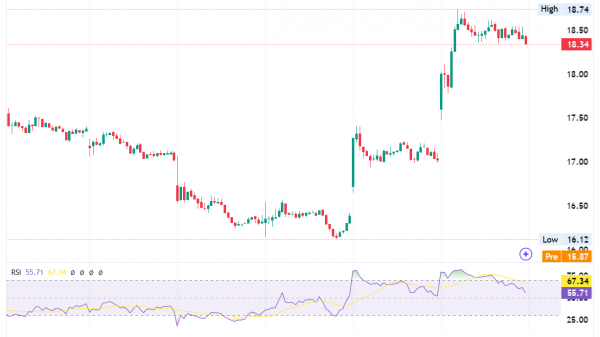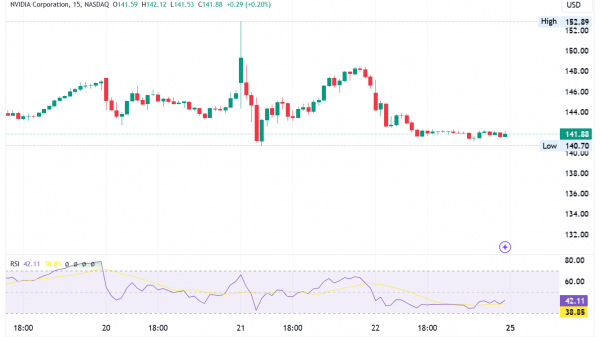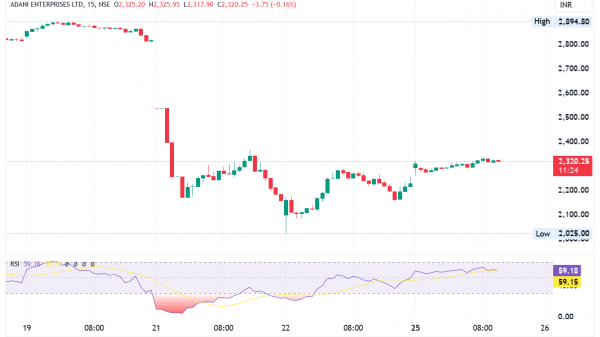Mastering Stock Trading Strategies: A Comprehensive Guide to Achieving Long-Term Success in the Market
When it comes to stock trading, having a solid strategy is key to success. Traders often focus on understanding support and resistance levels to predict market trends. Whether you’re dealing with stocks, bonds, or other financial instruments, knowing how to react to price fluctuations is essential. Even small price movements can lead to big gains or losses, so picking the right strategy can make all the difference. In this guide, we’ll explore the best stock trading strategies to help you confidently navigate the market.
Best Strategies for Stock Trading
We can choose from various types of stock trading strategies, including short-term, medium-term, and long-term options. So, let’s see what are the best and most widely used stock trading strategies.
Day trading strategy
Day trading is one of the trading strategies with a fairly short investment horizon. It is only carried out when the stock markets are open during the day. The opening and closing of your positions must always be done before the financial markets close for the day.
These positions can remain open for a few minutes or a few hours, but no more.
With day trading almost all stock market products are available.
Be careful, however. Day trading requires you to be available for many hours during the day.
For example, the opening hours in Italy are between 9:30 am and 5:30 pm.
If you want to trade in the United States, you will have to operate between 3:30 pm and 10 pm from Monday to Friday.
Day trading is, therefore, a very short investment horizon. It requires you to have very good control over your emotions and your mind. Also, you are looking at market fluctuations all day long and contemplating the charts.
In addition, it is not always the most profitable investment horizon. If you are a beginner, the time/profit ratio may not be there.
For those who want to get started, you will see how to use this strategy wisely in the article Buy and sell stocks on the same day.
Scalping trading strategy
Scalping is a very short-term investment horizon, even shorter than day trading. It consists of keeping your positions open for a few seconds to a few minutes.
With this trading style, you can invest in all simple stock market products, such as stocks, futures, or currencies.
You need an excellent mentality and excellent reactivity to be able to excel in scalping.
Generally, traders who do not have these qualities lose money very quickly.
In addition, your trading will be carried out during the day while the markets are open. Like day trading, you will spend many hours looking for opportunities and opening and closing your positions. However, there is no guarantee that you will benefit from better performance.
Scalping relies on certain prices’ high volatility to quickly profit. It is a difficult trading strategy to set up and requires a lot of time, skills, and experience.
It’s strongly recommended that you avoid this strategy if you are a complete beginner in the financial markets.
Trend trading strategy
Trend trading is one of the simplest trading strategies to apply. It consists of joining a downward or upward trend and following it.
A general rule in technical and graphical analysis states: “Prices in an already well-established trend are more likely to continue in this trend than to reverse.”
Thus, if this price trend is bearish, then there is a good chance that it will remain so. In the case of an upward trend, there is also a good chance it will continue.
The advantage of this trading strategy is the ease with which you can set it up.
However, it also has some constraints. Indeed, this trading strategy only works when the trends are clear and well-established. When high volatility is present on the stock in question, it is inapplicable.
Position trading strategy
Position trading is a mainly medium-term strategy, but it can be used in any other time frame.
The objective of the position trader is to position oneself at the birth of a trend and exit it as soon as it begins to show signs of exhaustion.
In this way, he takes full advantage of the rising phase without suffering too much from the falling phase.
It should be noted that it is possible to open positions on the rise as well as on the fall. In the fall, the trader takes full advantage of the falling phase without suffering too much from the rising phase.
Range trading strategy
Range trading is an investment strategy that can be applied over any time horizon. But it is mainly used in the medium term.
This strategy allows you to take advantage of price movements within what is called a range in English, i.e., a sort of corridor or flat rectangle.
Prices are, therefore, between:
a resistance above which they repeatedly stumble without being able to cross it upwards;
and a support below which they repeatedly stumble without being able to cross it downwards.
The goal of this strategy will, therefore, be to take advantage of the oscillations of the prices of a stock within this range.
In this strategy, it’s necessary to buy the stock when the prices are low and close to the support;
and then resell the stock when the prices are high and close to the resistance.
If the prices break through the support or resistance, then the strategy can no longer be applied.
To apply this strategy, however, it is necessary to know how to identify these support and resistance zones in order to exploit them effectively.
News Trading Strategy
News trading in the stock market refers to a strategy where traders make buy or sell decisions based on the impact of news events on stock prices. The strategy relies on the idea that news can significantly influence the price of stocks, and traders aim to capitalize on the market’s reaction to these news events.
News of mergers or acquisitions can lead to sharp movements in the companies’ prices.
Major political or global events, such as trade deals, wars, or natural disasters, can affect market sentiment and stock prices.
New laws or regulations, especially in technology, healthcare, and energy industries, can significantly impact stock prices.
The best stock options trading strategies
Options are derivative products that give the right (and not the obligation) to buy (or sell) an underlying at a price set in advance. The underlying asset is most often a share, but it can also be a stock index or a commodity.
The most classic options (known as vanilla options) are calls (purchase options) and puts (sale options). These options can be combined to create an option strategy.
Bull and Bear spreads
This strategy involves buying and selling two options of the same type and exercise date but with different strikes.
The Bull spread involves buying a call and selling another at a different exercise price.
The Bear spread involves buying a put and selling another at a different exercise price.
In the case of the bull spread, the investor expects the price of the underlying security to rise (and vice versa for the bear spread).
Butterfly and Condors
The butterfly corresponds to the purchase of 2 call options (respectively put options) and the issue of a call option (respectively put option).
Very logically, the payoff has a form that is all the more similar to a Dirac as the strikes are close. This strategy will be chosen by an investor who anticipates that the price of the underlying will remain close to the strike and will not move in one direction or another.
A condor is a butterfly strategy but with 4 strike prices and not 3 as previously.
Straddles and Strangles
The straddle is a portfolio composed of a call option and a put option with the same strike price. This strategy will be chosen by an investor who thinks that the price of the underlying will vary significantly without knowing exactly in which direction.
Conversely, an investor who anticipates that the price will remain stable around the strike value will engage in the opposite strategy.
The strangle is exactly the same type, but the strikes of the call option and the put option are different.
The investor is, therefore, betting on a larger variation in the stock price. However, the loss, if the stock price remains in the central values, is lower in a strangle because the initial investment is lower.
Strips and Straps
A Strip consists of a purchase (long position) on a call option and on two put options with identical strikes and expiration dates.
A Strap is a long position on two calls and on a put with the same strikes and expiration dates. In a Strip, the investor bets on a strong change in the share price but believes that it is more likely to go down than up.
In a Strap, the investor also bets on a strong change in the share price. But in this case, he is mainly betting on an increase in the share price.
The best risk management strategies for stock trading
Risk management should always be an important part of your strategy. Whatever your trading philosophy, you have a risk analysis to perform to determine your money management. Indeed, depending on the strategies, technical analysis, and fundamental analysis will inform you about market conditions.
In a highly volatile market, it will be advisable to adopt a more secure strategy by using little leverage or no leverage because a volatile market can encourage margin calls in the event of significant leverage.
The importance of a 2% strategy in stock trading
The 2% trading strategy is a risk management rule that helps traders limit the amount of capital they risk on any single trade. The core idea is to never risk more than 2% of your total trading capital on one trade. Here’s how it works:
Determine Your Risk: Calculate 2% of your total account balance. For example, if you have $10,000 in your trading account, 2% of that is $200. This means the maximum amount of money you should risk losing on a single trade is $200.
Set Stop-Loss Levels: Based on the 2% risk tolerance, set your stop-loss order so that if the trade goes against you, the most you will lose is $200. For example, if you are trading a stock and plan to buy 100 shares, your stop-loss should be placed at a price that would result in a $200 loss.
Position Sizing: The size of your position is determined by how far your stop-loss is from your entry price. For example, if your stop-loss is $2 below your entry price, you can buy 100 shares because 100 shares × $2 = $200, which is 2% of your capital. If the stop-loss is further away, you reduce the number of shares to stay within the 2% risk limit.
What is the 3-5-7 rule in trading?
The 3-5-7 rule in stock trading is a general guideline for managing risk and making quick decisions during trades, particularly for day traders. It outlines the following principles:
3% Loss Rule: If a stock loses 3% of its value after you enter a position, it’s time to consider exiting the trade to avoid further losses. This helps traders minimize risk by cutting losses early before they worsen.
5% Profit Rule: When a stock gains 5% after entering a position, traders are advised to take partial profits or move their stop-loss orders up to lock in gains, depending on market conditions. This helps secure profits in volatile markets.
7% Maximum Loss Rule: If the stock drops by 7% from the entry point, traders should exit the trade immediately. This ensures that significant losses are avoided, especially when the market or stock behaves unpredictably.
This rule aims to establish discipline, encouraging traders to take small, manageable risks while capturing gains and cutting losses before they become too damaging. It helps traders stick to a well-structured risk management plan.
What is the 11 am rule in stock trading?
The 11 am rule in trading refers to a pattern often observed in stock markets where the market tends to reverse or experience a shift in momentum around 11:00 am, typically during intraday trading. This pattern is more common in U.S. stock markets but can be relevant in other markets as well.
Markets often experience significant volatility and price action during the first hour of trading (9:30 am to 10:30 am). This is when institutional investors, day traders, and others react to overnight news or early market conditions.
By around 11:00 am, the initial momentum often slows down. Traders tend to take profits, and the market consolidates. This can lead to a reversal or change in direction from the earlier trend. For example, if the market had been rising during the first hour, it might start to pull back or stabilize around 11 am, or vice versa.
After 11 am, the market typically stabilizes or changes course for the rest of the trading day, often providing traders with clearer signals for the direction to follow. This period allows for more informed decision-making based on the morning’s price action.
Traders who use the 11 am rule look for signs of reversal or market trend continuation after this time, using it as a strategic point to enter or exit trades.
How do you choose the best stock trading strategy?
We have seen what are the different stock trading strategies you have at your disposal. But how to choose the most suitable one?
You choose the best stock trading strategy according to your skills, the time available, and the capital you want to invest.
It is obvious that swing trading is the best short-term or medium-term trading strategy, given all the many advantages. This is especially true if you are a beginner in the stock market.
Once you are really comfortable and profitable with a swing trading strategy, then why not try to operate on shorter time scales like day trading and scalping?
The strategy par excellence for the medium term is to swing trading.
Swing trading is one of the most widely used trading strategies. It consists of leaving your positions open for a few days, a few weeks, or a maximum of a few months.
A simple and effective long-term strategy is the trend reversal in swing trading on long-term supports and resistances.
This allows you to diversify your portfolio and limit your risk. In addition, this trend reversal strategy is based on large stock market movements, which means that once a position is initiated, you can build it into a trend-following strategy.
The advantage of this investment method is that it does not take much time and, above all, it is simple and effective in the longer term. You can also apply it to futures indices and commodities.
Bottom Line
Choosing a stock trading strategy doesn’t have to be difficult, and you’re not limited to just one approach. Successful traders are flexible, adjusting their strategies as opportunities arise. That’s why it’s important to understand various trading strategies and combine different methods to stay adaptable in any situation.
It’s also important to remember that early losses shouldn’t discourage you. Patience is essential in becoming a successful trader, and mistakes or losses are part of the learning process.
Tracking your profits and losses is a common habit among successful traders, helping them stay consistent and disciplined in their trading.
The post Stock Trading Strategies: A Complete Guide for Success appeared first on FinanceBrokerage.

































